Visiting the Buenos Aires Japanese Garden- A Pretty Piece of Japan in Argentina
Purchases made through links earn us a small commission, at no extra cost to you.
There are plenty of parks in the Palermo neighbourhood of Buenos Aires but one of the most beautiful and tranquil spaces is the Buenos Aires Japanese Garden (Jardín Japonés de Buenos Aires).
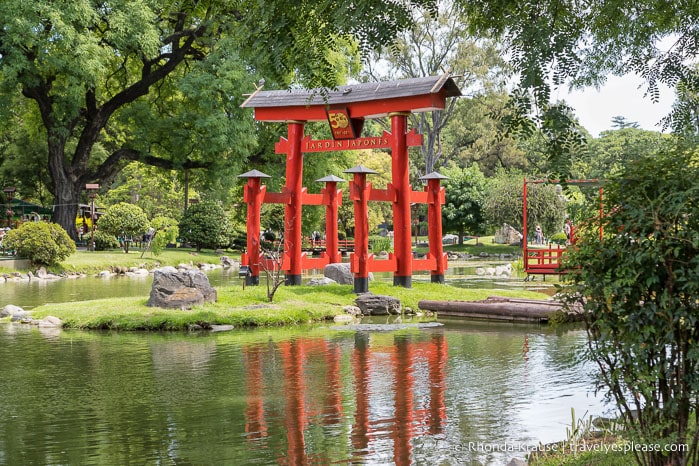
Nestled in a corner of the Bosques de Palermo (Palermo Woods), this pretty piece of Japan brings many of the best elements of Japanese gardens to Buenos Aires. From large ponds and trickling streams to stone lanterns and vermilion coloured bridges, the Japanese garden in Buenos Aires has it all and more.
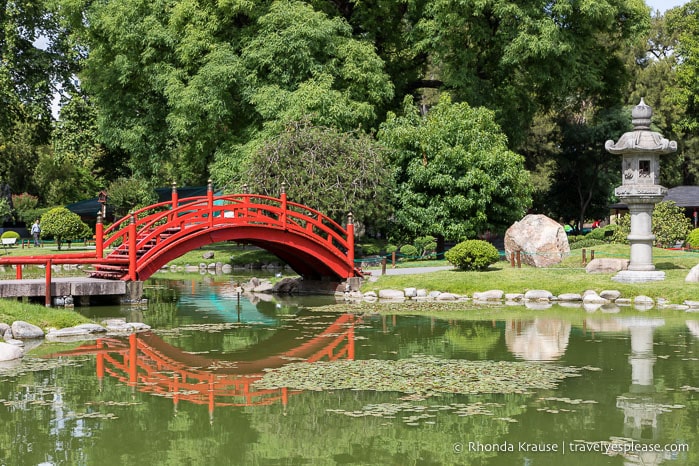
Before we share our experience visiting the Buenos Aires Japanese Garden, here’s a brief introduction to the park.
About the Jardín Japonés de Buenos Aires
The Buenos Aires Japanese Garden is one of the largest Japanese gardens of its type outside of Japan. Designed and built by the local Japanese community, it was donated to the city as a way of thanking Argentina for welcoming Japanese immigrants.
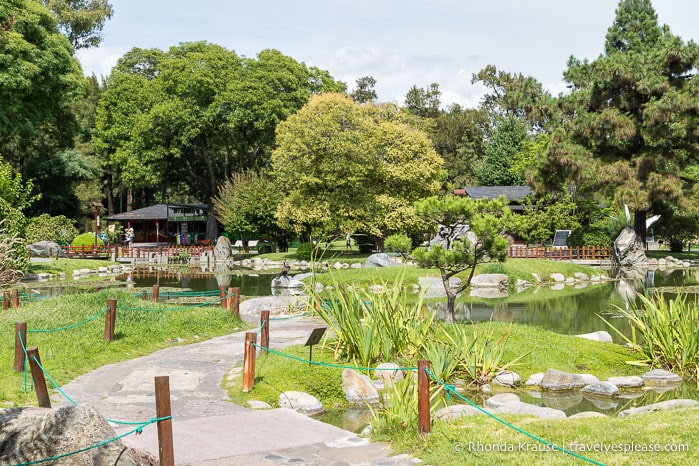
Upon completion in 1967, the garden was inaugurated on May 17th during a visit by Japan’s Crown Prince Akihito (who became emperor in 1989) and Princess Michiko. The event marked the first time a member of Japan’s imperial family had visited Argentina.
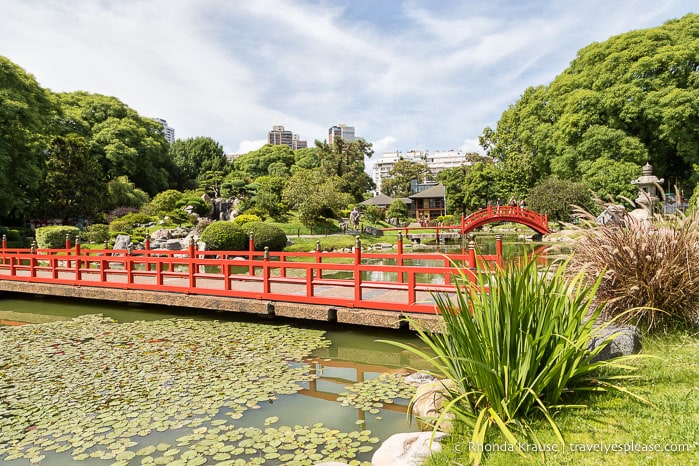
Keeping with principles of traditional Japanese garden design, the Buenos Aires Japanese Garden highlights the natural landscape through use of rock, water, and evergreen plants. The garden also features seasonally flowering trees and shrubs that are popular in Japan, including cherry blossoms, ginkgo biloba, and azaleas.
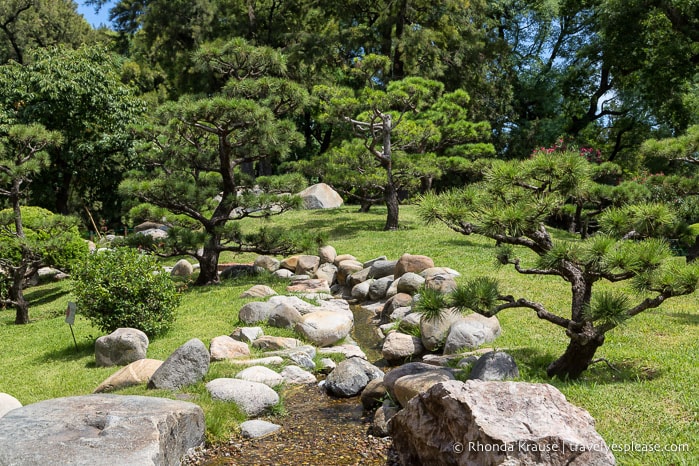
Other attractions in the garden are the Peace Bell, torii gate, koi pond, Japanese restaurant, tea house, cultural centre, and gift shop with traditional Japanese crafts. There’s also a greenhouse where you can buy bonsai trees and other plants and garden items.
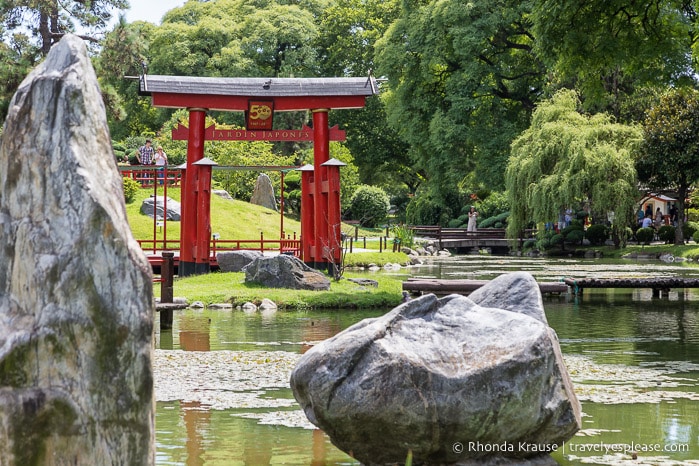
The Buenos Aires Japanese Garden is operated by the non-profit Japanese Argentine Cultural Foundation and is financed through admission fees.
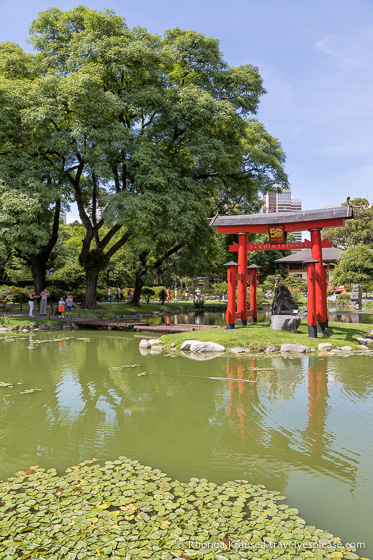
Our Visit to the Buenos Aires Japanese Garden
We arrived at the Buenos Aires Japanese Garden before it opened in the morning and were surprised to see that there was already a small lineup of people waiting to get in. For some reason I thought that a Japanese garden in this part of the world wouldn’t be a popular attraction, but I was wrong. The garden would prove to be popular with both tourists and locals, but not to the point of being over crowded.
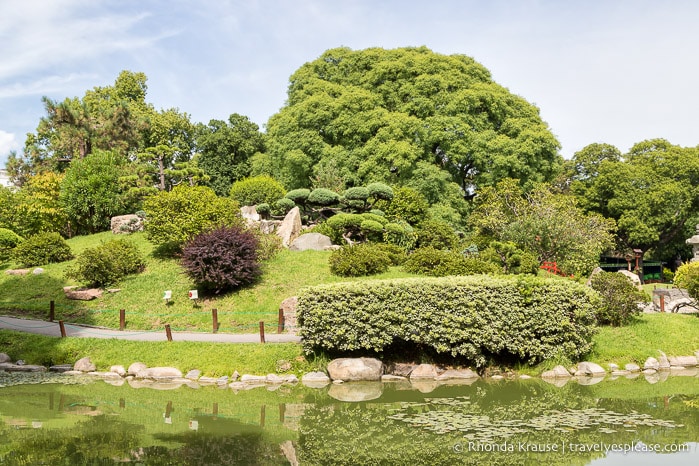
After making our way through the Hokkaido Entrance, we passed by a red torii gate and already I could feel the spirit of Japan, one of my favourite countries. Spread out in front of us was a large pond with vermilion bridges connecting scenic islands and peninsulas.
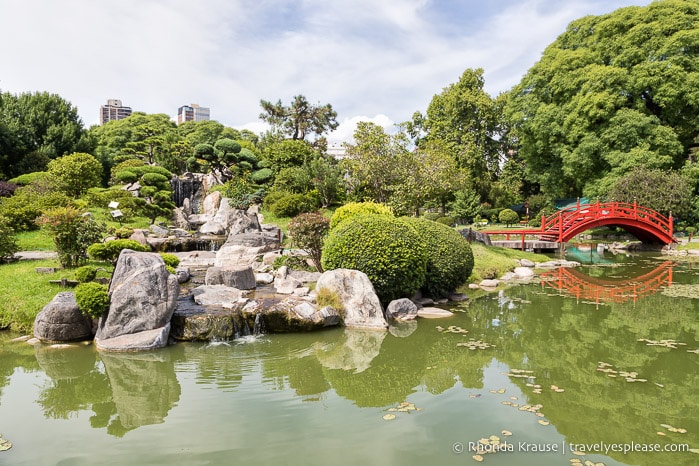
We eagerly headed across the nearest bridge (Puente Plano/Flat Bridge) where we got a lovely first look at the garden’s landscape. To our right was the 13 Eaves Tower and to our left was a small waterfall cascading down some rocks into the pond.
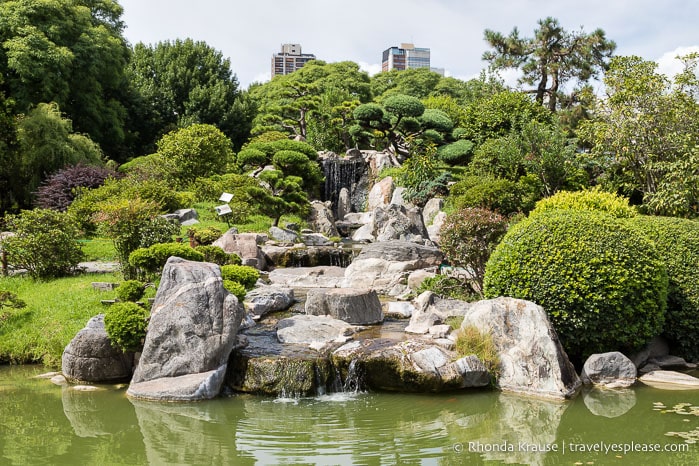
My favourite part of the view from this point was seeing a nearby arched bridge reflecting in the calm water. Mike was content looking for fish swimming among the floating lily pads.
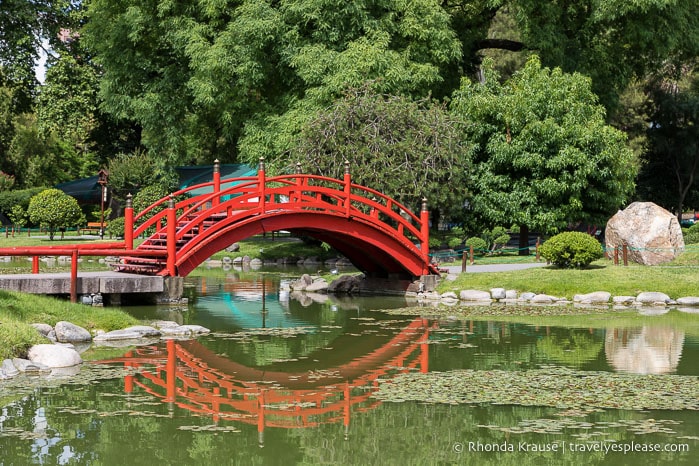
At the end of the bridge we followed the trail counterclockwise along the shoreline of the pond, passing through an area of cherry trees before coming to the tea house and stone lantern.
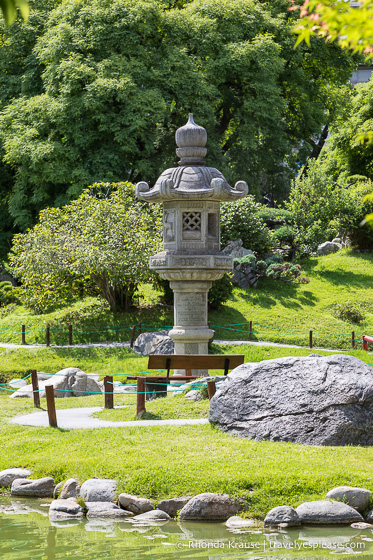
Next up we crossed the short, arched bridge so that we could explore the peninsula we admired from the flat bridge. Here we got a close-up look at the gentle waterfall and impeccably shaped trees framing it.
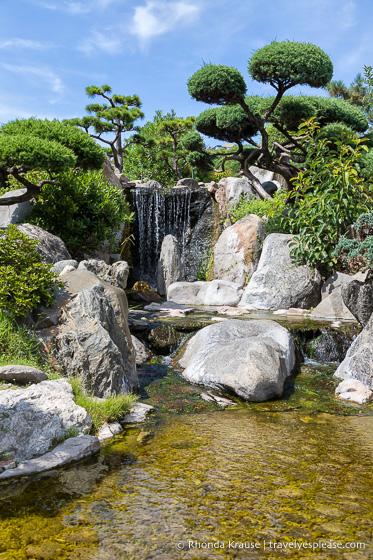
Continuing our lap around the peninsula, we soon came to a viewpoint that looked out onto the other side of the pond. Here we could see a torii gate standing alone on a tiny rock framed island.
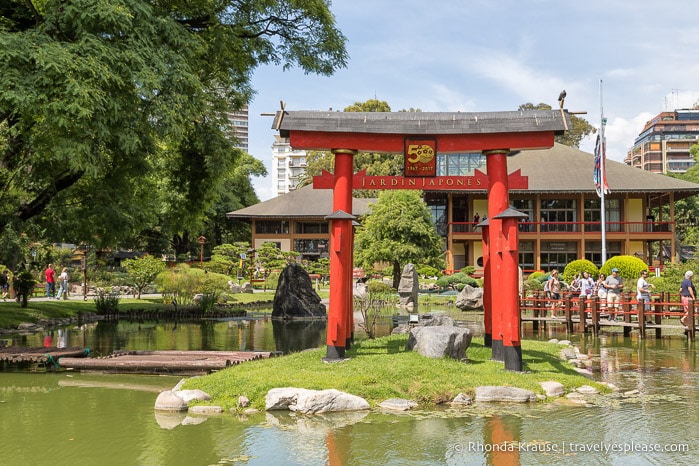
Back at the arched bridge, we crossed it again to continue our walk around the edge of the pond. We saw the Peace Bell and a monument to Japanese immigrants before arriving at the Zigzag Bridge. This narrow water crossing is another good spot to watch the fish and look at the torii.
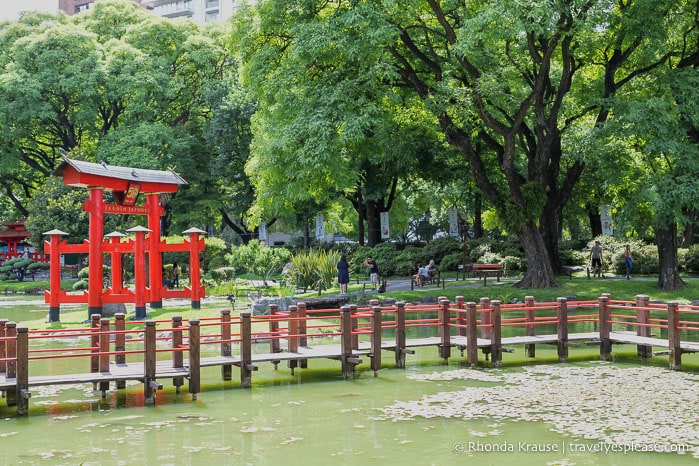
After the zigzag bridge we wandered down a few more paths before taking a break at the garden’s main building. Instead of visiting the restaurant and checking out the Tokyo Hall exhibits, we decided to look at bonsai trees in the garden centre.
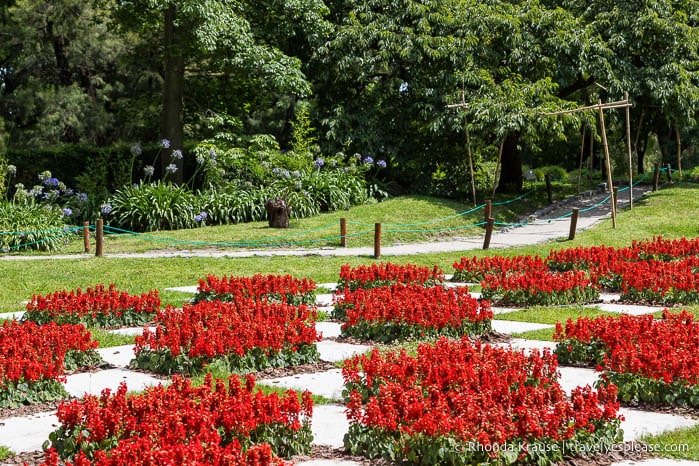
To finish our visit we walked along the other side of the pond back towards the Hokkaido Entrance. There were some roses, a pergola, azalea bushes, another traditional Japanese gate, and a gift shop. I would have loved to see the azaleas in bloom, but they weren’t in season. Guess I’ll have to come back in spring!
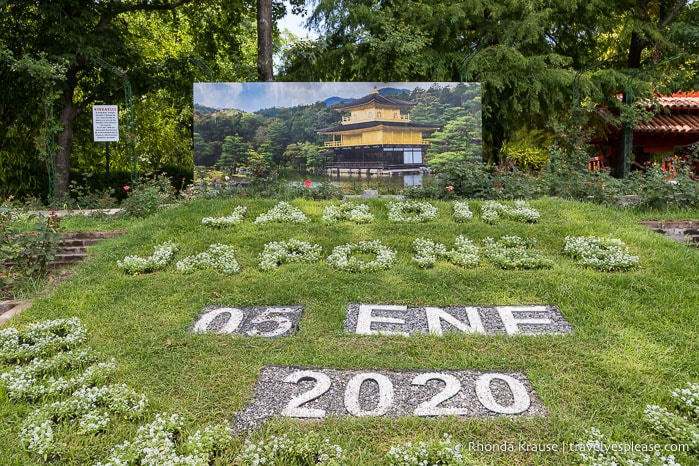
Final Thoughts About Our Visit to the Japanese Garden in Buenos Aires
In a city as large as Buenos Aires, it was such a joy to find a calming, relaxing place where we could decompress after a long journey from Canada. I especially loved the water features and three red bridges.
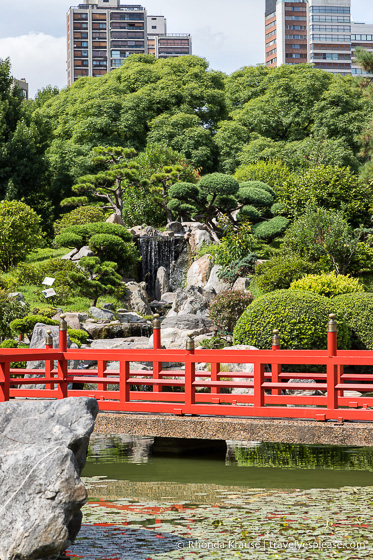
After reading that this was one of the largest Japanese gardens outside of Japan, I was expecting it to be a little bigger, but this just meant we could take our time visiting the different areas.
In many ways this garden reminded me of being in Tokyo, in part because of the tall buildings that overlook the property, but mostly because of the garden’s features and how at home I felt there (which is how I felt every time I’ve visited Japan). I guess that’s a testament to the design of this garden- it truly shares Japanese culture with the Argentine people.
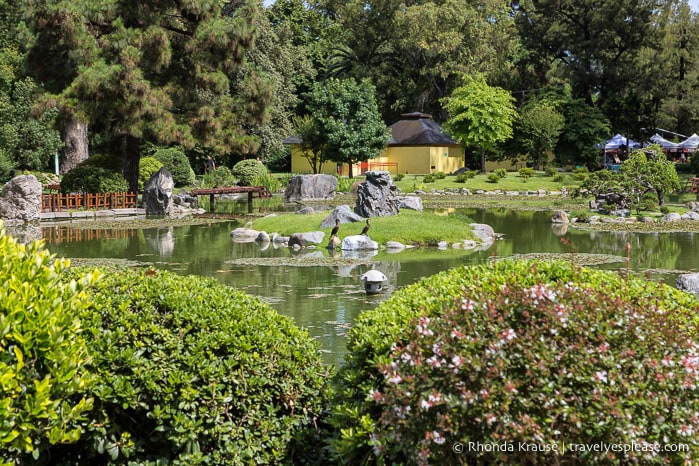
Tips for Visiting the Buenos Aires Japanese Garden
Location: The Jardín Japonés de Buenos Aires is located at the east end of Parque Tres de Febrero in the Palermo district. There are entrances at Figueroa Alcorta Ave and Casares Ave.
Hours and Admission: The Japanese garden is open every day and an admission fee is charged. Current prices and hours can be found here.
Best Time to Visit: The best time to visit the Japanese garden in Buenos Aires is from spring to fall when you’ll be able to see a variety of trees and flowers in bloom. In spring cherry blossoms and azaleas can be enjoyed, in summer there are purple water lilies, and in autumn the ginkgo biloba leaves turn yellow.
Information was correct at the time of publishing, but can change without notice. Please confirm directly with the venue.

Accommodations in Buenos Aires
For your convenience, here is a list of hotels in Buenos Aires. Please consider booking your Buenos Aires accommodations through the included link. It costs you nothing extra and helps support this website. Thank you!
More Argentina Destinations and Travel Guides
- Buenos Aires Bike Tour- Exploring Buenos Aires by Bike
- VISITING PERITO MORENO GLACIER- A SPECTACULAR GLACIER IN LOS GLACIARES NATIONAL PARK
- MOUNT FITZ ROY HIKE- HIKING TO FITZ ROY AND LAGUNA DE LOS TRES IN EL CHALTEN
- 2 WEEKS IN PATAGONIA- OUR PATAGONIA ITINERARY FOR ADVENTURE IN ARGENTINA AND CHILE
